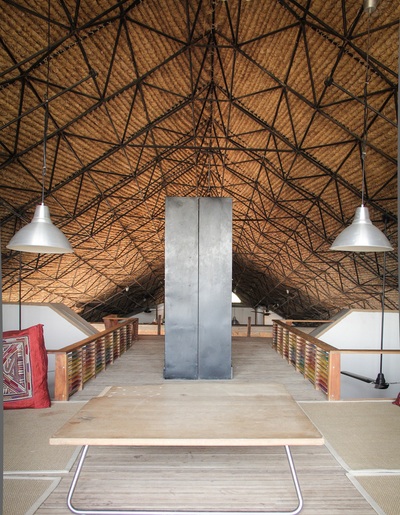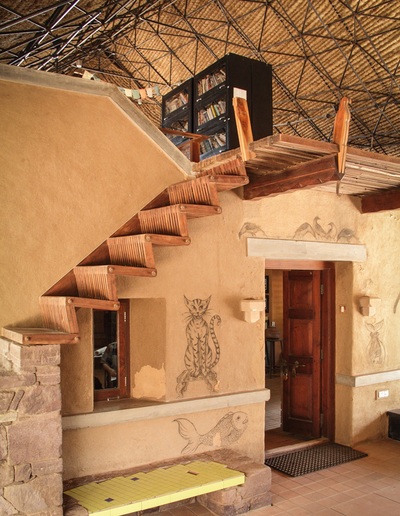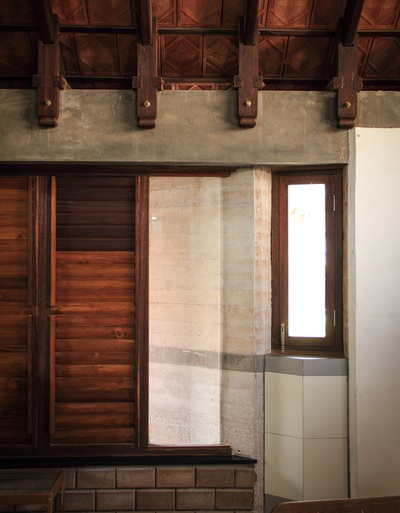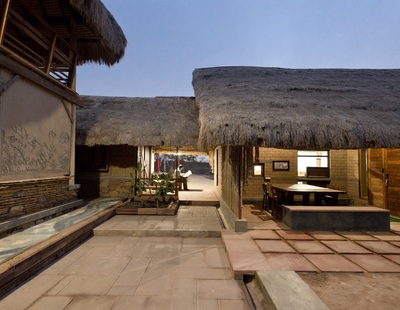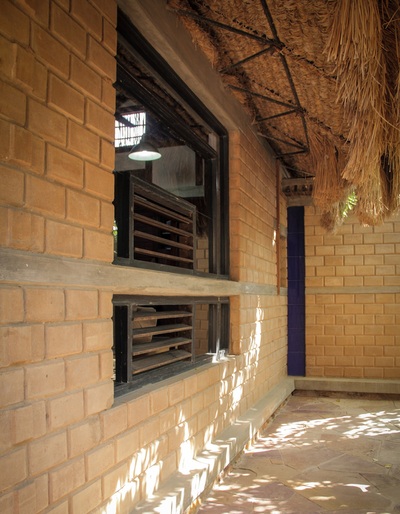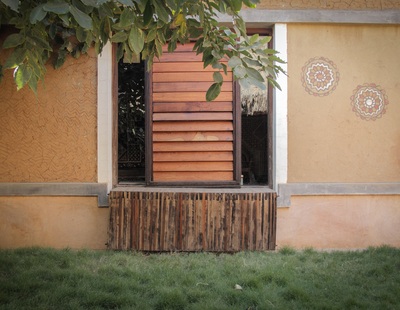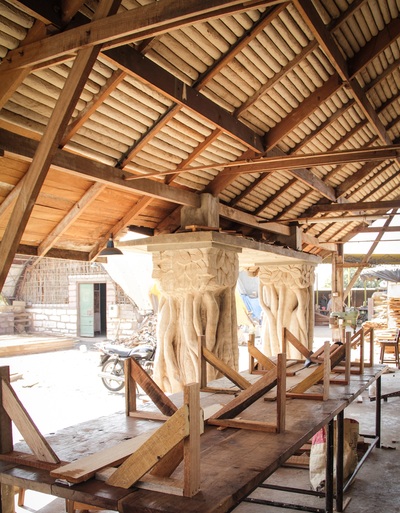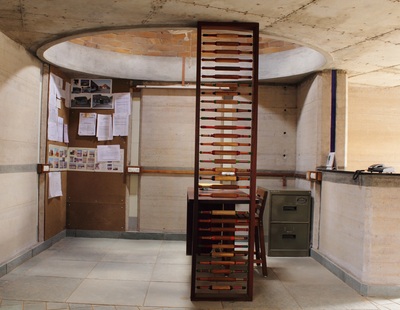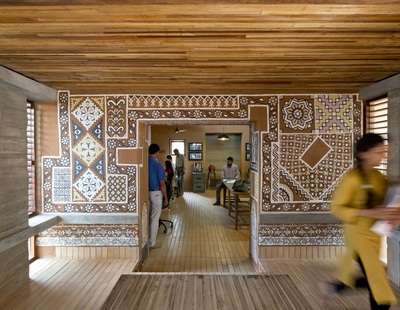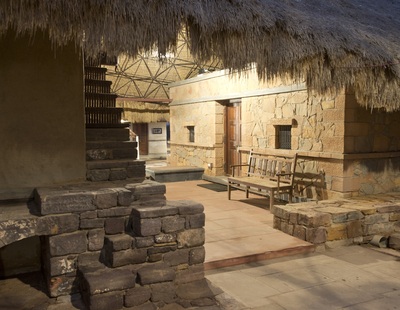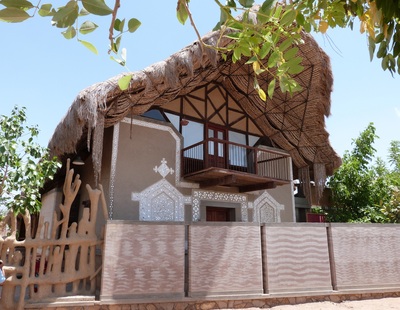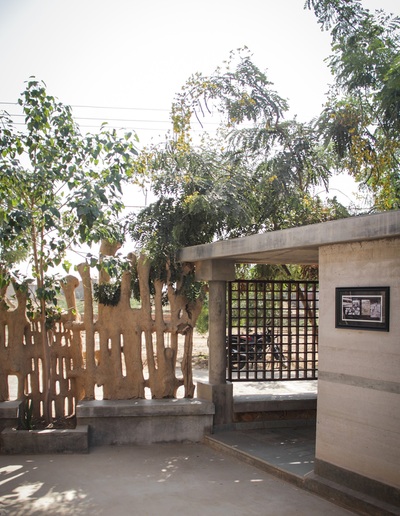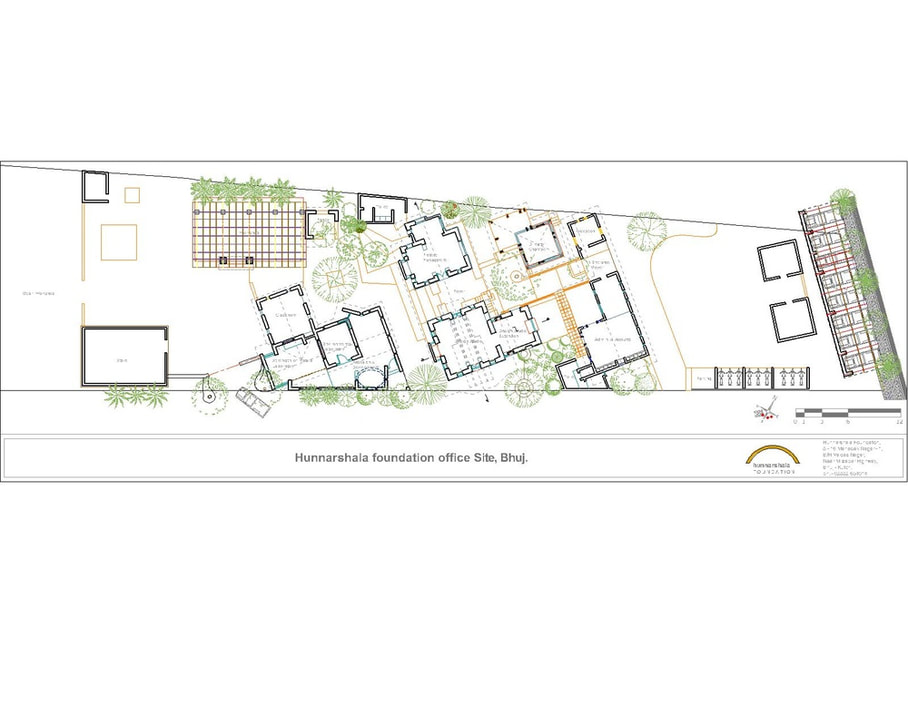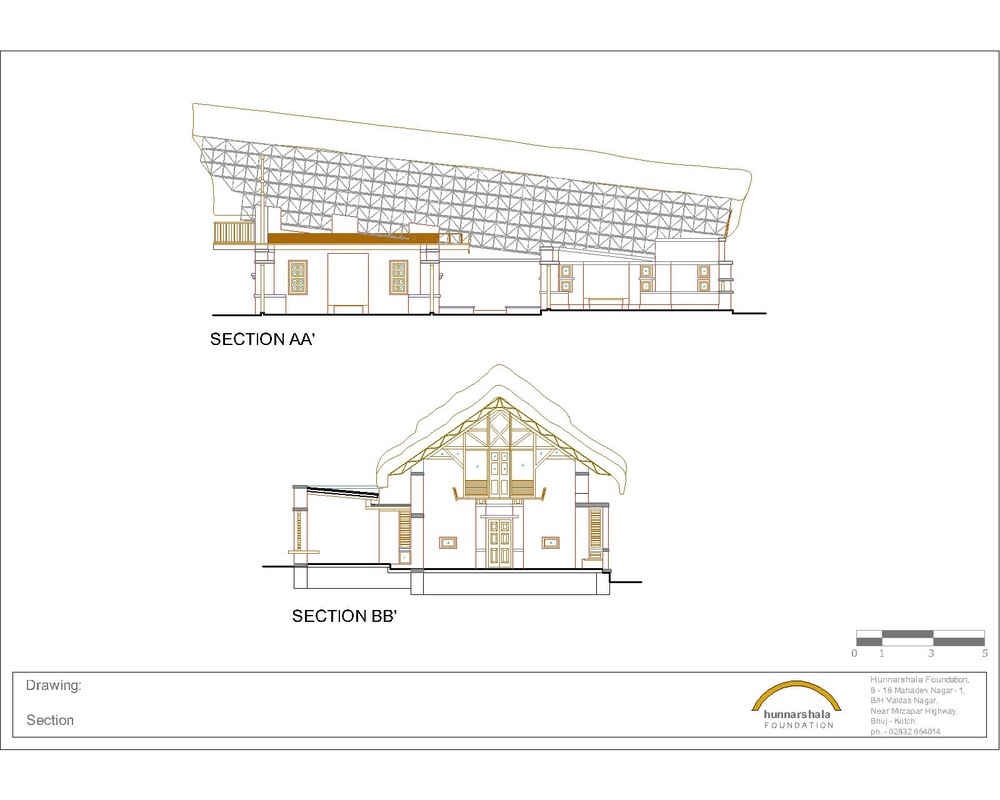HUNNARSHALA CAMPUS
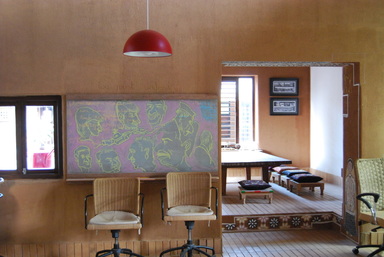
Our contemporary urban culture is one of copious consumption, which uses a lot of energy and resources and at the same time generates a lot of waste. Hunnarshala believes that it is essential to stress on technologies and materials that not very energy consuming as well as recycling the waste our environment generates.
We have made a conscious effort to use materials like waste wood in structural areas. The campus has a fair bit of rammed earth construction; we have used a waste product generated in china clay factories as an additive to the earth mixture. We incorporated a Balinese thatching technique in our roof, which we learnt during our work in Indonesia. Rice husk was used for thatching. Apart from these we have experimented with other earth technologies and roofing techniques in the campus.
The building is an amalgamation and a contribution from several master artisans and architects who have worked with Hunnarshala over the last decade. All the enterprises we have incubated have contributed to the construction of our campus as well.
Orchestrated by Kiran Waghela, this symphony captures the spontaneity and diversity of an Indian bazaar; the campus explores earth, wood and stone and several interpretations of climate and solar passive architecture.
We have made a conscious effort to use materials like waste wood in structural areas. The campus has a fair bit of rammed earth construction; we have used a waste product generated in china clay factories as an additive to the earth mixture. We incorporated a Balinese thatching technique in our roof, which we learnt during our work in Indonesia. Rice husk was used for thatching. Apart from these we have experimented with other earth technologies and roofing techniques in the campus.
The building is an amalgamation and a contribution from several master artisans and architects who have worked with Hunnarshala over the last decade. All the enterprises we have incubated have contributed to the construction of our campus as well.
Orchestrated by Kiran Waghela, this symphony captures the spontaneity and diversity of an Indian bazaar; the campus explores earth, wood and stone and several interpretations of climate and solar passive architecture.
